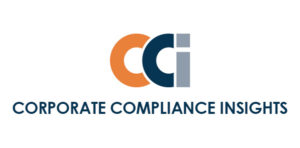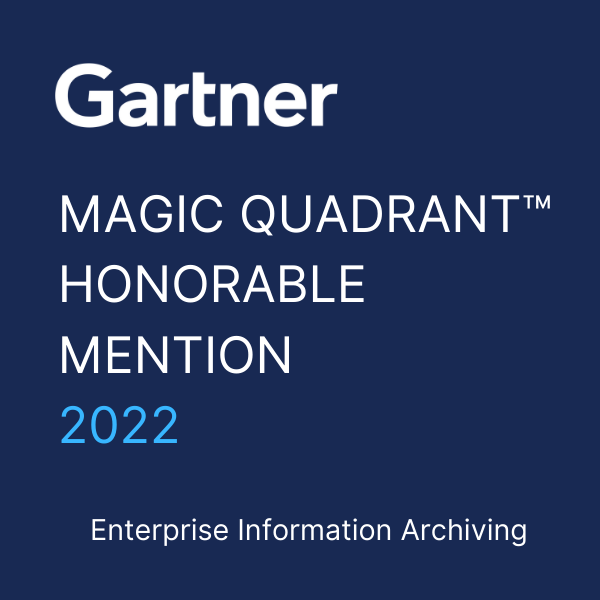
FINRA Reveals Top Areas of Interest: Supervision and Digital Communications Compliance Programs
The Financial Industry Regulatory Authority (FINRA) has issued its latest report, and the findings could be significant for financial services firms. Theta Lake’s Marc Gilman discusses what organizations need to know.
The publication of FINRA’s Report on Examination Findings and Observations is now in its third year. In 2019, the title and framing have changed slightly: “Recommendations” have been recast as “observations,” but nevertheless the Report provides an opportunity to learn about the most significant regulatory and compliance risks FINRA identified during the year. FINRA dedicated sections to both Supervision and Digital Communications, emphasizing them as key compliance focus areas for 2020.
These two issues have clear and critical overlap. As technologies for digital communications develop at a rapid pace, corresponding supervision of these new channels must evolve as well. FINRA highlights this connection directly stating,
“if a firm permits its associated persons to use a particular application — for example, an app-based messaging service or a collaboration platform — the firm must preserve records of business-related communications and supervise the activities and communications of those persons on the application. Firms remain responsible for conducting due diligence to comply with the securities laws and FINRA rules and follow up on red flags of potentially violative activity and may, in some cases, use services provided by the relevant digital channel or third-party vendors.”
This statement puts firms on notice that collaboration platforms should be considered regulated communication channels, just like email and instant messaging: they require the same archiving and oversight mechanisms. New applications, such as Zoom and Microsoft Teams, should be treated similarly to existing messaging apps like email, Skype, Bloomberg and Symphony. Moreover, supervision of communications that take place on these applications to ensure consistency with suitability mandates, pending Regulation Best Interest directives and FINRA’s communications with the public rules are paramount. We’ll review both the supervision and digital communications portions of FINRA’s Report to determine what issues should be top of mind for compliance teams in the coming months.
Issues Around Supervision
FINRA cites several Supervision findings, including firms’ failure to align to new anti-money laundering requirements under Rule 3110 and issues with trusted contact information in Rule 4512. Notably, FINRA flagged several firms for inadequate systems for oversight of suitability mandates pursuant to Rule 2111. Specifically, the systems firms designed to monitor suitability did not allow them to determine if “recommendations were suitable in light of a customer’s individual financial situation and needs.”
Suitability is at the heart of FINRA’s mission of investor protection, so failures in this area have a meaningful impact on the quality and accuracy of the financial advice member firms provide to customers. Given the passage of the SEC’s Regulation Best Interest and FINRA’s oversight of it in 2020, investment recommendation standards will be central for compliance programs. These requirements can be further complicated for FINRA-regulated firms that also offer insurance products governed by state law — these dually registered firms will grapple with multiple overlapping and, at times, divergent standards.
In 2020, firms will need to consider technologies that can facilitate the identification of conversations relating to investment recommendations in order to ensure that financial advice comports with FINRA, SEC and state requirements. The inclusion of suitability in the Report in conjunction with the focus on Reg BI suggest that FINRA will inspecting this issue closely next year.
Issues Around Digital Communications
A section on Digital Communications was included for the first time in the Report this year. At a high level, the inclusion appears to acknowledge that the number and nature of communications applications are rapidly expanding. Collaboration tools, video blogs, live-streamed content, messaging applications with self-destruction capabilities and digital channels used to host “electronic sales seminars” are just some of the platforms included in the Report.
The IPOs of Zoom and Slack coupled with the strong stock performance of RingCentral and consistent performance of Microsoft’s products demonstrate that the growth and adoption of these platforms are on the rise. Zoom, Microsoft Teams and WebEx all provide functionality within the realm of regulated activity and should trigger compliance reviews like any other communication application. FINRA’s general reference to “collaboration tools” should be taken as inclusive of all the platforms mentioned in this article, as well as any others that facilitate person-to-person interactions.
While “business-related communication” historically encompassed a collaboration platform’s chat functionality, whiteboarding features and other mechanisms for exchanging ad hoc free text, the generalized language in this year’s Report leaves open the possibility that the conversations themselves and content shared over webcams, screen shares and file transfer mechanisms could be considered as in-scope. Again, given FINRA’s investor protection mandate, it would not be surprising if the regulator extended requirements to retain and supervise all activity on modern collaboration platforms, given that they are starting to use them to communicate with clients, prospects and other external users about products and services.
Emerging regtech platforms have been developed to monitor those conversations, so it seems natural that the retention and supervision rigor applied to email, social networking content and instant messaging should also be applied to collaboration applications.
One of the more nuanced and noteworthy findings — based on an actual rule violation — was around messaging and collaboration, which stated:
“In some instances, firms prohibited the use of texting, messaging, social media or collaboration applications (e.g., WhatsApp, WeChat, Facebook, Slack or HipChat) for business-related communication with customers, but did not maintain a process to reasonably identify and respond to red flags that registered representatives were using impermissible personal digital channel communications in connection with firm business.”
Although a few of the platform references here are a bit dated — HipChat was acquired and promptly shut down when Atlassian announced its partnership with Slack — the intent is clear: If your firm is using a collaboration platform, you must be able to supervise its communications. Substitute any of the applications discussed here like RingCentral or Teams for those cataloged by FINRA in the Report and the result is the same: Deploy your firm’s standard compliance and supervision protocols to those technologies.
FINRA seems to leave the door open for broadening their thinking about what might constitute relevant communications in the context of a collaboration platform. Since collaboration tools provide new and unique modes of communication, a shift toward the totality of interactions conducted on these platforms (video, webcam, etc.) as “business as such” communications requiring retention and supervision would better protect investors and offer clarity for member firms. The concept of “communication” shouldn’t be constrained by antiquated notions of text-only exchanges.
As signposts for FINRA’s areas of interest, the 2019 Exam Observations are extremely helpful. Given the primacy of supervision and digital communications in the Report, firms’ compliance approach to these issues must be carefully considered. Firms must understand the nuances of how their employees are using these new communication platforms and the mechanisms available to oversee the activity on them to comply with relevant conduct obligations. Taking a proactive approach to communications compliance can help ensure that your firm won’t end up as one of the examples in FINRA’s 2020 Report.
This article first appeared on Corporate Compliance Insights, on December 12th 2019.
Access the original guest post by Marc Gilman here!











